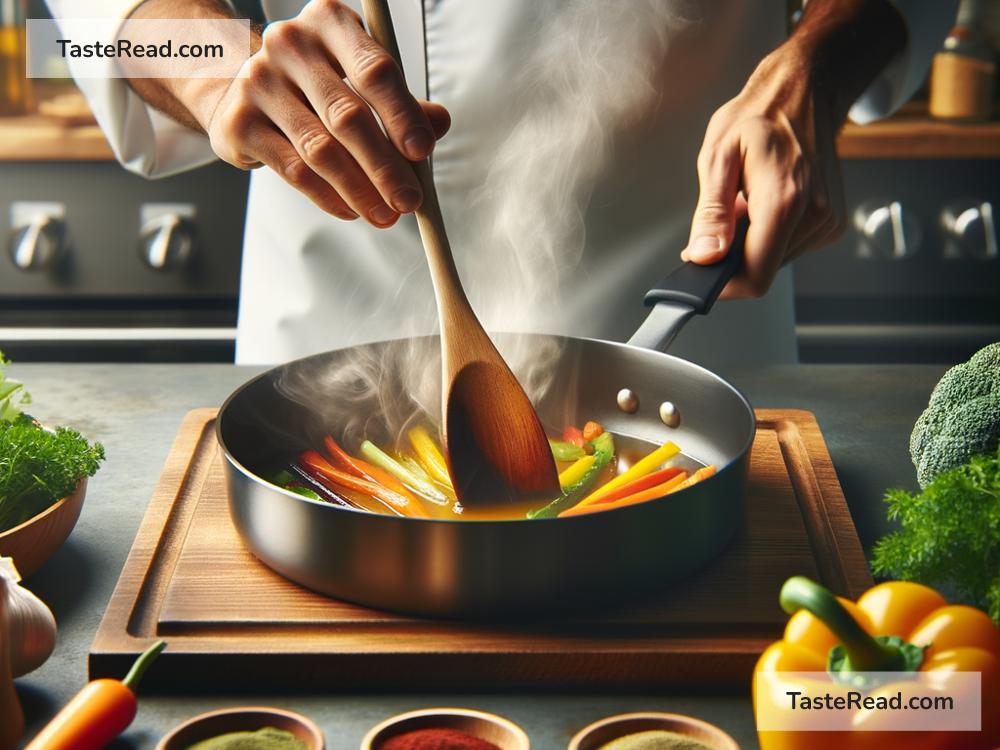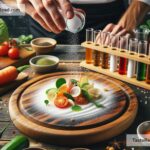The Science of Cooking with Chemical Momentum: Techniques and Tips
Cooking is such an exciting activity! It’s not only an art but also a science. Whenever you step into the kitchen and whisk together ingredients, chop vegetables, or heat food, you’re part of many fascinating chemical processes happening behind the scenes. One of the key players in the science of cooking is something called “chemical momentum.” Don’t worry—it’s not as complicated as it sounds. Let’s break it down step-by-step and explore how this concept influences cooking. You might be surprised by how demystifying science can make you a better cook!
What Is Chemical Momentum?
Chemical momentum refers to the dynamic kickoff of chemical reactions that occur when you cook food. These reactions drive changes in flavors, textures, scents, and appearances. Imagine when you sear meat, bake bread, or caramelize onions—the changes aren’t random. They result from chemical reactions that happen when heat interacts with your ingredients. Momentum keeps these reactions moving forward until the food reaches its delicious final form.
Simply put, chemical momentum is the chain reaction effect in cooking science. The conditions you apply—like heat, time, acidity, or mixing—start and sustain these chemical processes. Understanding how this works will help you make smarter decisions in the kitchen.
The Role of Heat and Temperature
One of the greatest drivers of chemical momentum is heat. When you cook, heat provides the energy needed to get reactions going. For example:
-
Searing Meat: When you sear steak or chicken, you’re triggering a chemical process called the Maillard reaction. This happens when the proteins and sugars in the meat mingle under high heat, creating a flavorful crust. The temperature needs to be hot enough (above 300°F or 150°C) for the reaction to start. Maintain this heat to keep momentum moving forward until the surface browns beautifully.
-
Baking Bread: Ever noticed how dough rises in the oven and turns golden? That’s thanks to two reactions: yeast fermentation and caramelization. The heat activates the yeast longer and eventually starts breaking down sugars to create crispy crusts.
For more detailed cooking, controlling your temperature is key. Use thermometers or adjust stove settings carefully to keep chemical reactions consistent.
Acidity and Balance in Cooking
Acidity also fuels chemical momentum. Ingredients like vinegar, lemon juice, and buttermilk don’t just add tangy flavors—they also affect reactions. Let’s look at some examples:
-
Tenderizing Meat: Marinating proteins in an acidic liquid starts breaking down tough fibers in the meat. Over time, this creates a softer texture. Be careful not to overdo it, though. An overly acidic marinade can make the meat mushy.
-
Baking with Buttermilk: When baking, acidic liquids like buttermilk or yogurt help activate baking soda, releasing bubbles of carbon dioxide. This chemical process makes cakes or muffins rise beautifully.
Balancing acidity with sweetness or fat is often the secret to a well-rounded dish. Experiment with adding small amounts of acids and tasting to see how they transform your food.
The Magic of Mixing and Creating Momentum
Have you ever wondered why mixing ingredients properly matters? It’s because combining things evenly sets chemical reactions off in the right way. Here’s how:
-
Baking Desserts: Creaming butter and sugar, whisking eggs, or folding in flour creates specific chemical conditions to make cakes fluffy and cookies crisp. For example, creaming butter integrates air into the batter, building chemical momentum for leavening agents to work.
-
Whipping Cream or Egg Whites: When whipping cream or eggs, you’re physically introducing air into the mixture, which sets off structural changes. This momentum creates foamy textures perfect for meringues or whipped toppings.
Take your time when mixing dough or batter—it’s tempting to rush, but proper mixing keeps the reactions happening steadily.
Tricks to Keep Chemical Momentum Moving
Since cooking is all about timing and reactions, here are some tips to get the best results:
-
Watch the Clock: Timing matters. Overcooking or undercooking can change the outcome of chemical reactions, leaving you with burnt food or dishes that don’t taste fully developed. Pay attention to recipes and check your food frequently.
-
Layer Flavors Slowly: Adding ingredients one step at a time builds flavor momentum. Don’t toss everything in at once—like sprinkling salt after cooking instead of before, or layering herbs at the end.
-
Taste Often: As chemical reactions progress, the flavors transform too. Taste your food periodically (if safe to do so) and adjust seasonings along the way.
-
Experiment Fearlessly: Science is all about learning through experiments. Add a pinch of this or a splash of that—it’s all about building better chemical momentum and figuring out what works best for your recipe.
Why Science Makes Cooking Better
Understanding the science of chemical momentum in cooking lets you take more control in the kitchen. Instead of relying only on gut instinct or guesswork, you’ll know exactly what’s happening, why it’s happening, and how to adjust along the way. Knowing techniques like controlling heat, using acidity smartly, mixing properly, and experimenting can turn your cooking game into a masterpiece.
Next time you head into the kitchen, think like a scientist: observe, experiment, and enjoy the amazing process of turning ingredients into a delicious creation! Who knew chemical momentum could be so tasty?
This simplified explanation should give you a great start to understanding how science plays a role in every meal you cook. Happy experimenting!


